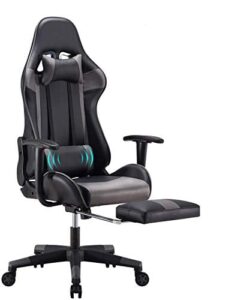No matter whether you treat your computer as the centerpiece of your home office or just stuff it under your desk, buying the right PC case matters.
At a minimum, you want to pick a PC case that’s the right size for your needs and has room for all your hardware and USB devices. But some PC cases offer much, much more. Spacious innards, lower temperatures, muffled sound, extensive water-cooling support, and fancy-schmancy tempered glass panels or RGB lighting are just the tip of the iceberg.
Here’s a guide to buying a PC case that’s perfect for you. This is just the first step in your DIY journey; be sure to check out PCWorld’s guide to building a PC, too, as well as our guide on setting up your PC’s fans for maximum system cooling.
Size matters for PC cases
Before anything else, decide what size case you need. There are three major case sizes: Full tower, mid-tower, and mini-ITX.
Full-tower and mid-tower cases both fit standard ATX motherboards—by far the most common motherboard size out there. Both can also fit smaller micro-ATX motherboards. Exact sizing varies from case to case, but most mid-towers run up to roughly 18 inches high and 8 or so inches wide. Mid-tower PCs are probably the most common form factor and have enough room to fit systems with a closed-loop CPU cooler, a couple of graphics cards, and a lot of storage.
Full-tower cases are massive. They often measure more than 20 inches in height and are longer and deeper than mid-tower cases, which makes them ideal if you’re one of the rare people using a massive Extended-ATX motherboard.
Also consider a full-tower case if you plan on loading up your rig with extensive (or custom) water-cooling, storage galore, or 3- and 4-way graphics card setups. Full-tower cases often support more fans and 5.25-inch drive bays as well. And the extra elbow room sure is nice during building.
Mini-ITX cases are the polar opposite of full-tower PC cases, built for diminutive mini-ITX motherboards. Some of these can be wondrously small and even fit inside home theater cabinets, but the tight quarters can create compatibility issues with some hardware. Don’t expect to use liquid-cooling or a big honking CPU cooler in most mini-ITX cases. Some mini-ITX cases don’t support full-length graphics cards, either; confirm the maximum length before you buy. Finally, there isn’t much room for extra hardware in these space-constrained chassis, so you’ll be limited to fairly basic system configurations. They’re great for schlepping to LAN parties, though! Sometimes you’ll see “mini-tower” cases, which slot between mini-ITX and mid-tower in size to accommodate micro-ATX motherboards. They’re rarer than the others.
Price considerations for PC cases
Once you’ve decided how big of a PC case you need, the next step is figuring out your budget.
If you’re spending $50 or less, you’re probably going to wind up with a bare-bones, nondescript case with few extra features. Try to pick one that has two fans, one in the front of the case and another in the rear, for maximized air-flow, which helps cooling. You won’t always find the option in this price range, though.
Things open up in the $50 to $150-ish price range, which has seen a lot of advancement over the past few years. You’ll find a lot of variance in both design and construction in the midrange. As always, be sure to check measurements to ensure your desired PC case can fit all your hardware, and you’ll also want to keep an eye on extra features. They’re a lot more common in this price range, especially as you move up in cost.
Features purely come down to personal preference or specifics needed for your build. Some cases are built with more fans for higher performance; others focus on silent design. Some—most notably much of Corsair’s case lineup—even eliminate 5.25-inch drive bays completely for better airflow. You’ll start to find water-cooling compatibility worked into some cases in this price range, along with better cable management details, tool-less design, and aesthetic niceties like RGB lighting or tempered-glass side panels. We’ll get into feature details shortly, but around $100 is the sweet spot for price-to-performance when it comes to buying a PC case.
Once you extend beyond $150 or so, you should expect a PC case that excels in both performance and acoustics, and one that comes with connectivity options and handy features galore. Some of them are huge; this is where you’ll find most full-tower cases. Build materials tend to be swankier in high-end cases, with aluminum and tempered glass being much more common than in budget and mid-range cases.
PC case aesthetics
Make sure you like the look of the PC case you’re buying! You’re going to be staring at it for years to come, so this is not a superficial consideration. Every online retailer shows PC cases from multiple angles on their store pages, so there’s no excuse for buying ugly.
PC cases come in all sorts of colors, materials, and designs. If you don’t want to spend time neatening up your interior cabling, pass on cases with a side window.

